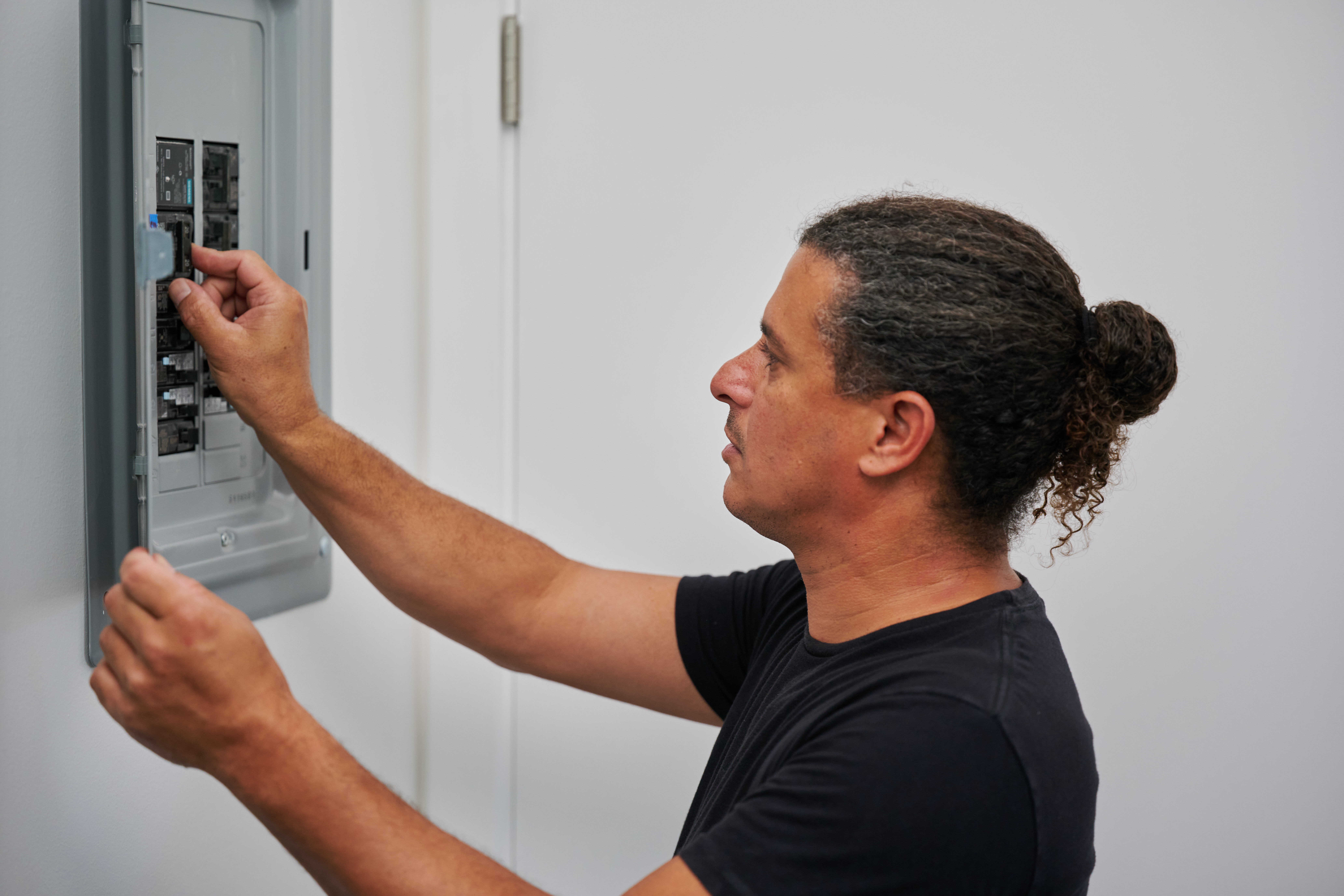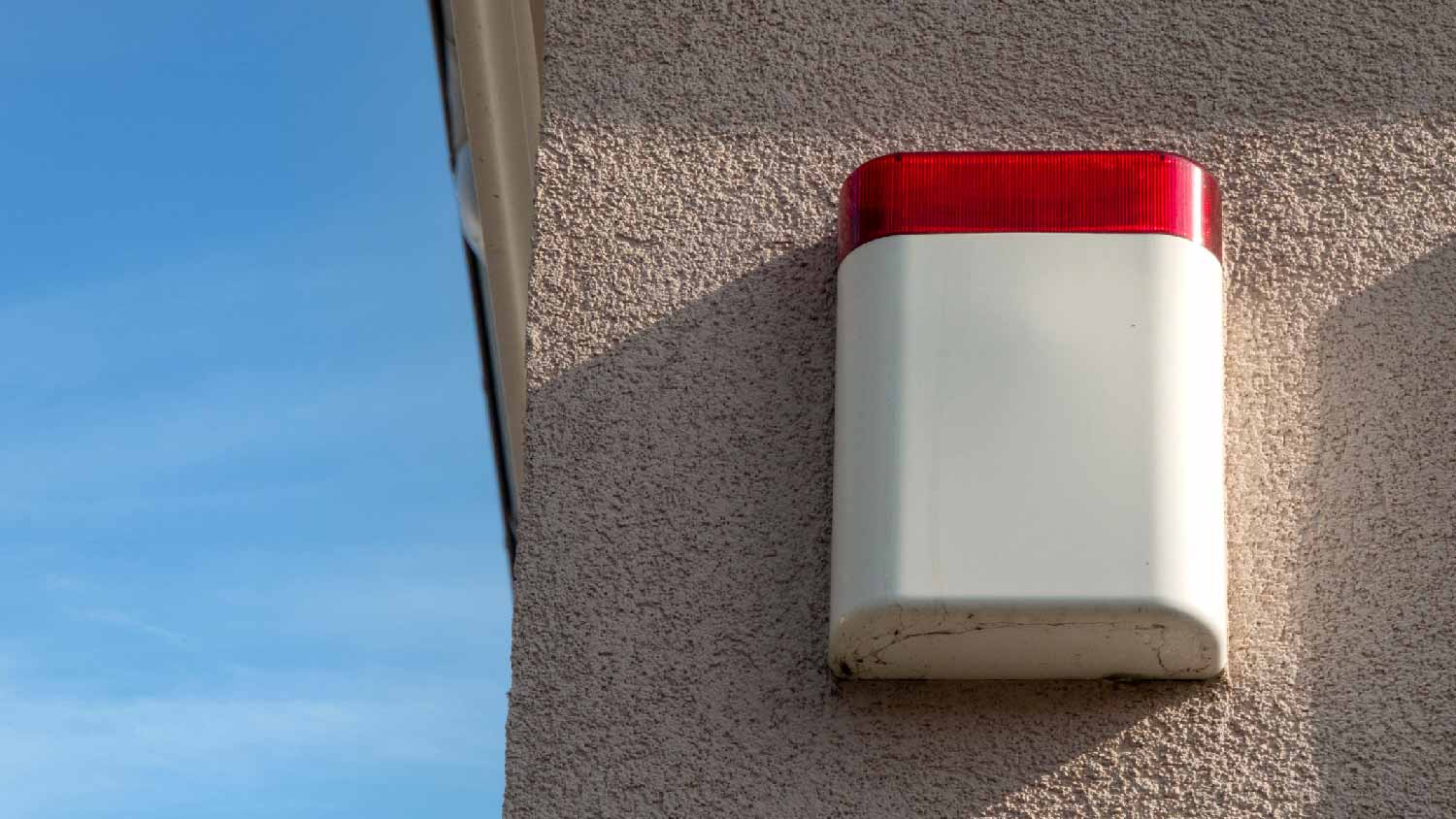
Electrical subpanels allow you to use appliances and electronics safely. This cost guide explains the important factors to consider when installing a subpanel.
Protect your home from electrical surges with this essential upgrade


Whether you’ve added the latest and greatest computer system or you want reassurance when you’re near an electrical outlet during a storm, learning how to install a whole-house surge protector can help protect your home from electrical power surges.
However, this project requires serious knowledge of electrical safety and wiring, so it’s best to hire a professional electrician to complete the installation. Working with electrical wiring and systems can be hazardous to your home and personal safety, so only complete the work yourself if you have the appropriate tools, skills, and experience. If that’s the case, roll up your sleeves and follow this guide to get your whole-house surge protector up and running.
Some electrical panels need a screwdriver to remove the cover, while others have sliding or locking mechanisms. Once you’ve unlocked or unscrewed the cover, remove it to access the panel inside. It’s a good idea to store the panel’s screws in a container so that you don’t lose them while working.

Turn the power off in your panel. To reduce the risk of electrical shock, use a non-contact voltage tester to test all of the wires for signs of a voltage. Repeat this step until your voltage tester doesn’t detect any electrical current.
Pick a location for your whole-home surge protector. You can either install the surge protector inside or outside of the panel box. The double pole breaker will need to be inside the panel box, so choose a mounting location that is easily within reach of the designated breaker to avoid longer wires, which lose more voltage than shorter wires.
When choosing the location of your whole-house surge protector, keep in mind that it can be installed anywhere between your electric meter and main electrical panel. However, the best location is inside your panel because it’s closest to power lines and provides adequate protection for home electrical components. If you’re not sure where to install your new whole-house surge protector, consult a professional electrician to get their expert opinion.
With your safety gloves and glasses on, it’s time to mount the whole-home surge protector inside the panel box. Follow the manufacturer’s instructions that came with your surge protector to correctly mount the protector. Some whole-home surge protectors need to be drilled into the panel, while others can be installed on the outside of your panel box. Keep in mind that mounting guidelines vary by internal vs. external surge protector.
Use a drill and the mounting mechanisms that came with your surge protector to secure the whole-system surge protector into your panel box.
Tap one of the knock-outs on the side of your panel box, then slide the wires into the knockout. Place the lock nut onto the surge protector and screw it to secure the surge protector onto the side of your breaker box.
You need to install a double-pole breaker for your surge protector to connect to, which takes up two slots in your breaker box. This addition is best installed right next to your main breaker. Before you complete that step, you may need to remove the lowest circuit breaker in your panel to make room for the surge protector if it’s too full.
If that’s the case, ensure the panel is off, and then use gloved hands and a screwdriver to loosen and remove the terminal screws on the two wires. Firmly pull the breaker out, and move the breaker to the top of the panel. Then, reattach the wires to that circuit breaker using a screwdriver, and label the new location for future reference.

Now that your panel has free space, pop the double-pole breaker into the open location. Firmly push the breaker into the slot until it clicks into place.
You want your wires to be as short as possible to protect your panel as much as possible. Check the length of the wires that need to connect to your neutral bar and double-pole breaker. Use wire cutters to trim the wires so that they’re short and straight—not bent—leaving enough wiggle room for minor adjustments.
Use wire strippers to expose around ⅝ inch of wire, or between ½ and ¾ inch. This step is a good time to check the wires of your whole-system surge protector and ensure that they’ve also stripped to that length. Make adjustments as needed to even out the wiring.
Loosen the neutral bar, and slide the neutral wire from your surge protector into the bar. Repeat with the ground wire. Tighten the terminal screws with a screwdriver to secure the wires. You should have a red and black wire remaining at the end of this step.

Almost done! One of the last steps is to wire the whole-house surge protector to the newly installed double-pole breaker. You can put either the red or the black in either slot on the breaker. Insert each wire and tighten using a screwdriver.

Flip the switch on your designated double-pole breaker to the “OFF” setting, then flip it to the “ON” setting. If you installed your whole-house surge protector correctly, the green light should turn on. If the indicator light is off, then you may have incorrectly installed the whole-house surge protector or the double-pole breaker. Other times, you could have a faulty surge protector or breaker. When in doubt, contact a professional electrician to inspect the panel and help you troubleshoot any outstanding issues.
You need to use the correct whole-house surge protector for your electrical service panel. Several factors affect which surge protector you’ll need, including:
Type of surge protector: There are two types of whole-system surge protectors—type one and type two. You’ll need to install a type two, as type one surge protectors require more advanced electrical know-how.
Size of your home: Most homes have a 200-amp service panel, but older homes may have a 100-amp circuit breaker. Check the main circuit breaker for a printed amperage to determine the size of the breaker box. Alternatively, you can add the amperages of each breaker in the box to calculate how many amperes are in your panel.
Energy absorption rate: Choose a surge protector that can absorb a high amount of energy before failing to ensure your electronics are protected in case of a power surge.
NEMA rating: The National Electrical Manufacturers Association (NEMA) also has a rating system. A type one surge protector is your most basic level, while a type five is your most advanced level.
Internal vs. external surge protectors: Internal surge protectors go directly into the panel, while external surge protectors are on the outside of the box with the wiring installed through the side of the panel.
Your new whole-house surge protector also needs its own double-pole breaker in the panel. Locate your electrical panel’s rating inside the panel door to see the amperage rating. Add up the total amperages in your panel box to see if your panel can handle extra amperages.
If you need more amps than your box allows, you may need to contact an electrician to upgrade your electrical panel. If you don’t have any room in your panel to install a new breaker, then you’ll need to install a subpanel.
Hiring a pro to install your whole-house surge protector costs between $70 to $700 on average for the materials and an additional $50 to $100 per hour for the labor costs. This extra cost, however, is well worth the peace of mind you'll get from knowing that your surge protector is safely and correctly installed.
If you have any hesitation about working with electricity, then your best course of action is to hire an electrician near you to handle this project.
You should not attempt to install a whole house surge protector if you don't have experience working with electricity. Failure to follow electrical safety precautions can result in electrocution or put your house at risk of a fire.
From average costs to expert advice, get all the answers you need to get your job done.

Electrical subpanels allow you to use appliances and electronics safely. This cost guide explains the important factors to consider when installing a subpanel.

Electrical panel replacement costs $530 to $2,100, depending on the location, the type of hardware, and any required building materials.

Looking to size up your electrical system to cover higher usage and improve efficiency? Use this guide to see the cost to upgrade an electrical panel.

Adding an outlet to your home can be as straightforward as connecting to an existing circuit. Learn how to wire an outlet from another outlet in this advanced-level DIY guide.

Removing an alarm system may require the assistance of a professional electrician. Find out the average cost to remove old house alarms.

Learn a new skill and find out how to wire a light switch (safely) in your own home. This is one project that’s sure to light up your day.